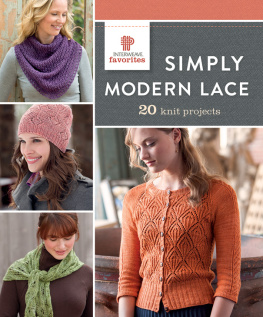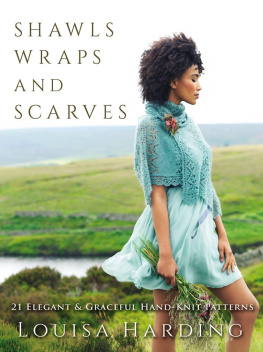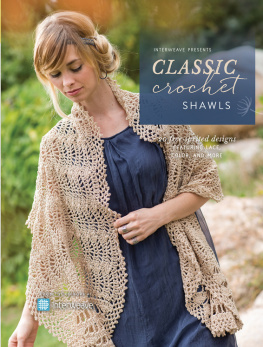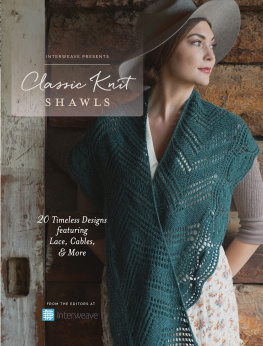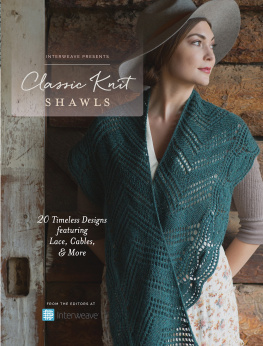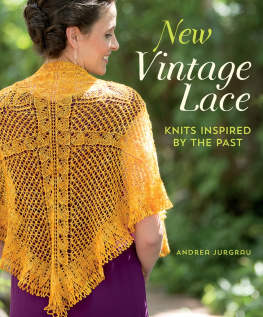Interweave - Simply Modern Lace
Here you can read online Interweave - Simply Modern Lace full text of the book (entire story) in english for free. Download pdf and epub, get meaning, cover and reviews about this ebook. publisher: F+W Media, genre: Home and family. Description of the work, (preface) as well as reviews are available. Best literature library LitArk.com created for fans of good reading and offers a wide selection of genres:
Romance novel
Science fiction
Adventure
Detective
Science
History
Home and family
Prose
Art
Politics
Computer
Non-fiction
Religion
Business
Children
Humor
Choose a favorite category and find really read worthwhile books. Enjoy immersion in the world of imagination, feel the emotions of the characters or learn something new for yourself, make an fascinating discovery.
- Book:Simply Modern Lace
- Author:
- Publisher:F+W Media
- Genre:
- Rating:5 / 5
- Favourites:Add to favourites
- Your mark:
- 100
- 1
- 2
- 3
- 4
- 5
Simply Modern Lace: summary, description and annotation
We offer to read an annotation, description, summary or preface (depends on what the author of the book "Simply Modern Lace" wrote himself). If you haven't found the necessary information about the book — write in the comments, we will try to find it.
Simply Modern Lace — read online for free the complete book (whole text) full work
Below is the text of the book, divided by pages. System saving the place of the last page read, allows you to conveniently read the book "Simply Modern Lace" online for free, without having to search again every time where you left off. Put a bookmark, and you can go to the page where you finished reading at any time.
Font size:
Interval:
Bookmark:




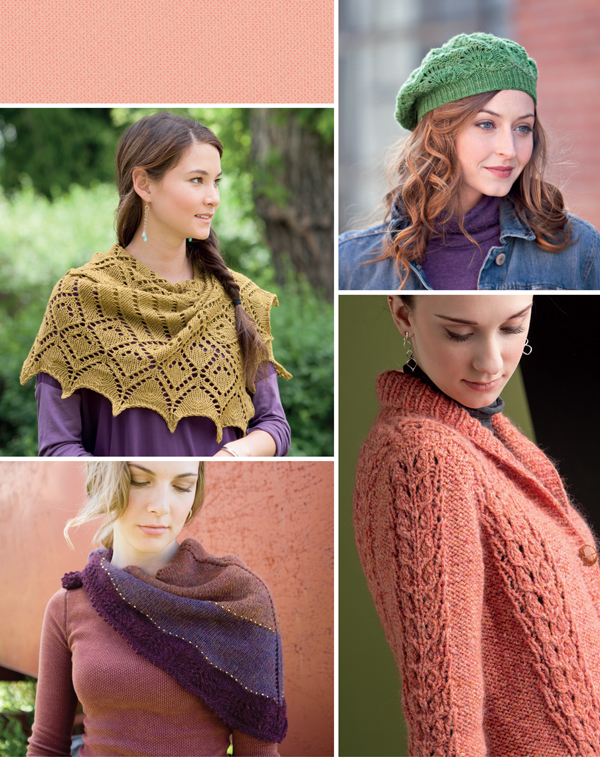
Lace is both fascinating and intimidating to so many knitters. Lace knitting creates some of the loveliest patterns imaginable, but all too often is perceived as difficultor worse, as dowdy and old-fashioned. Some of the most beautiful lace is actually quite simple; after all, lace is nothing more than strategically placed holes in your knitting, with a corresponding decrease for every yarnover increase. Lace can take center stage in sumptuous shawls and gorgeous sweaters or can serve as an accent, an edging, or an unexpected motif in a sea of stockinette. The craze for small knitted shawls in recent years has led to a new interest in lace knitting, with knitters eager to use it in more modern ways, often paired with stockinette or simple garter stitch.
The projects weve collected here represent the widest variety of lace knitting we could findfrom the breathtaking traditional-style shawls many people associate with knitted lace to their more modern, smaller, and simpler counterparts. There are accessories such as hats, socks, and scarves that offer small but satisfying doses of lace knitting, while tops and cardigans give you a choice of challenging (but oh-so-worth-it) allover patterns, or lace used in simple but striking wayspanels, edgings, and simple motifs. Along the way, youll find useful essays on lace knitting, including a general overview of the technique, an introduction to cast-ons and bind-offs best suited for lace, and how to shape lace patterns.
Whatever your project preference, time allotment, or skill level, you will find projects that will draw you in and get those needles working!
Airy, light, and a bit mysteriousthe delicate tracery of knitted lace is hard to resist. Even the simplest of lace patterns looks impressive and inspires admiration. But intricate as it may appear, knitted lace is simply a fabric punctuated with deliberate openings that can be arranged in a myriad of ways to create patterns that range from basic to complex. The wonderful thing about knitted lace is that in spite of its apparent intricacy, it follows a simple logic. The openings are created by special increases called yarnovers, and each yarnover is accompanied by a compensating decrease. Once you understand how yarnovers and decreases work together, youll be on your way to mastering the vast array of lace patterns.

Traditional laceweight yarn yields beautiful lace patterns, but sport, worsted, and bulky yarns can be equally effective. A smooth, light-colored fingering or sportweight yarn worked on a needle three to four sizes larger than youd normally use creates a fluid fabric in which the lace pattern is clearly visible. But fuzzy yarns and dark and variegated colors yield impressive results, too. Experiment with different yarns and needle sizes when youre swatching lace patterns to see the variety of effects you can create with a single pattern; youll quickly find out what appeals to you.
A yarnover is a stitch made by a loop or strand of yarn placed on the right-hand needle as you work. On the return row, this loop is worked as you would any other stitch; once knitted, it leaves a small opening in the knitting. Each yarnover is counted as an increase of one stitch. To maintain a consistent stitch count, every yarnover is paired with a decrease that may immediately precede or follow the yarnover, appear several stitches away from the yarnover in the same row, or even be worked on a later row. The decreases used in lace knitting are standard: k2tog, ssk, and any of the several kinds of double decreases. The specific kind of decrease to use in any lace pattern is spelled out in its instructions. A good way to see how yarnovers and decreases work together is to knit a sample pattern.
In the Simple Lace pattern at right, the yarnover is made between two knit stitches and is worked as follows: after knitting the stitch before the yarnover, bring the yarn forward between the needle tips. When you knit the next stitch, bring the yarn up and over the right-hand needle to the back of the work again, ready to knit the next stitch . The strand that travels over the top of the needle is the yarnover, and it counts as one stitch.
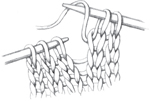
Figure 1. Yarnover worked between two knit stitches.
Note that in this pattern, you are working the yarnovers and decreases for lace patterning on the right-side rows. The wrong-side return rows are considered rest rows because they are worked without any yarnovers or decreases. Although some lace patterns have patterning on every row, it is quite common for lace patterns to have rest rows that alternate with pattern rows.
Check your work often. If you do discover a mistake, correct it right away. (See below for how to fix mistakes.) After you have knitted a few repeats of the pattern, finish with Row 6 of the repeat and bind off loosely. Pin out the swatch, stretching it so that the pattern formed by the holes is clearly visible. Then steam the swatch.
Instructions for knitted lace are often presented in chart form. Charts offer a graphic representation of the front or right side of the pattern. The chart below shows a visual picture of the lace-pattern repeat given in the written instructions above.
Each line of the chart represents a row of the stitch pattern. Each square represents a stitch. The chart is read from bottom to top, and RS rows are read from right to left, in the same direction as one normally knits. The first stitch on the left-hand needle as youre ready to begin a row corresponds to the first square in the bottom right-hand corner of the chart. Notice how wrong-side rows have no patterning; they are rest rows. The symbol key tells what to do for each stitch; for example, a plain square represents a knitted stitch and a circle represents a yarnover. A right-slanting line represents k2tog and means that you knit the stitch that corresponds to the k2tog square with the stitch to the left of it.
Font size:
Interval:
Bookmark:
Similar books «Simply Modern Lace»
Look at similar books to Simply Modern Lace. We have selected literature similar in name and meaning in the hope of providing readers with more options to find new, interesting, not yet read works.
Discussion, reviews of the book Simply Modern Lace and just readers' own opinions. Leave your comments, write what you think about the work, its meaning or the main characters. Specify what exactly you liked and what you didn't like, and why you think so.

